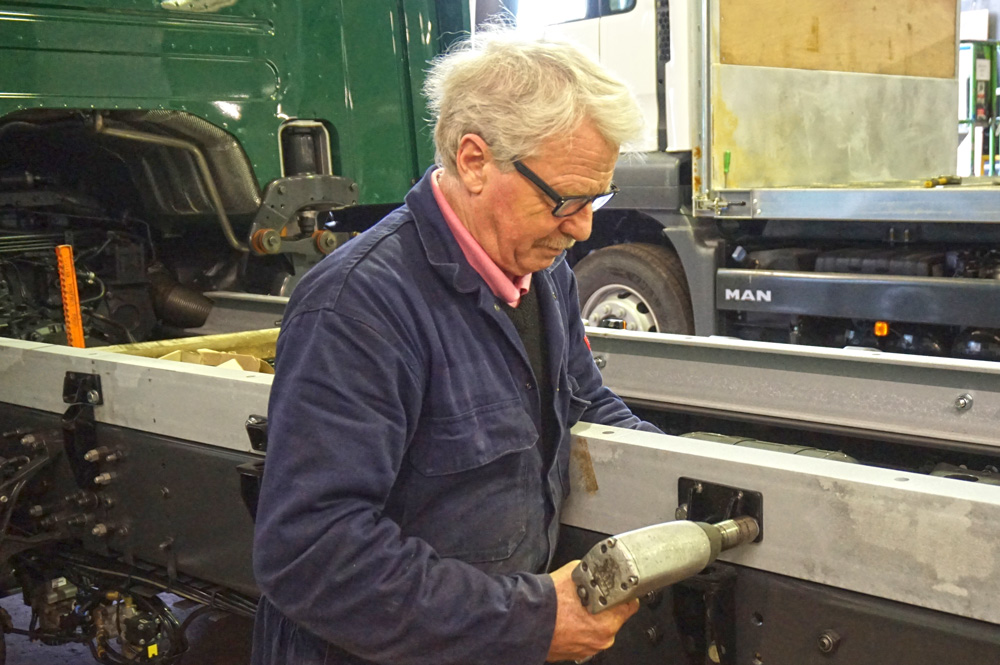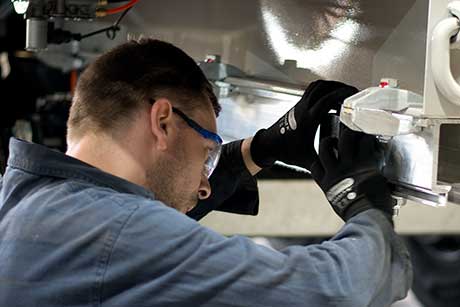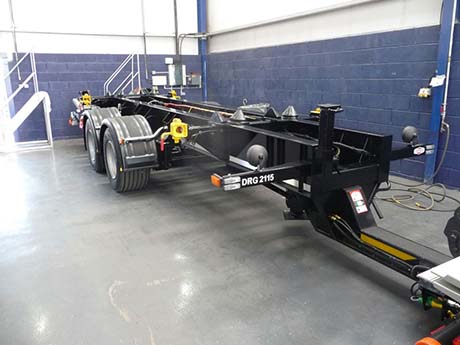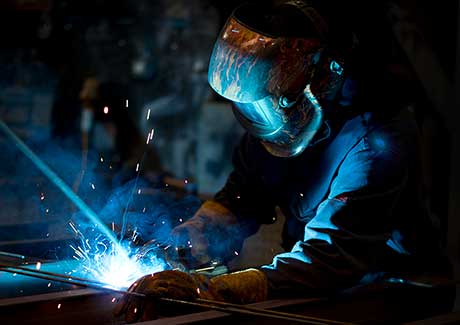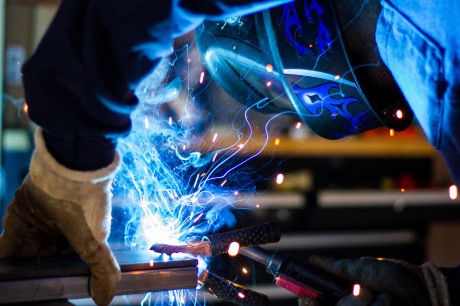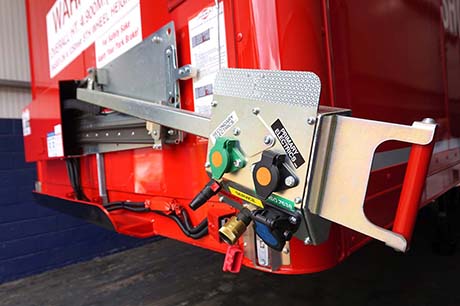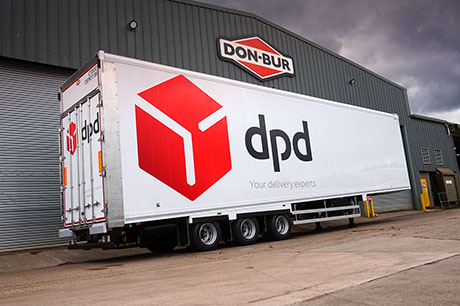John Blood, aged 67, started work in the transport industry as an apprentice for Stoke-on-Trent bodybuilders Tom Byatt (Engineers) Ltd on 18th March 1963. They would later become known as Don-Bur (Bodies and Trailers) Ltd - and he still works there today as a senior coachbuilder.
John says his relentless work ethic is fuelled by his love of the job, his admiration for the people he works with and the challenge of building the impossible.
When he started work, The Beatles had just released their breakthrough album ‘Please, Please Me’, while Harold Wilson was elected leader of the British Labour Party.
John didn’t initially get the apprentice role he applied for at Tom Byatt, and instead had to settle for a role at E&B Plastics, building kit cars. His persistence to get the job would soon pay off though as only three months into his role at E&B Plastics, he was offered the Tom Byatt apprenticeship and a chance to work for one of the largest employers in Stoke-on-Trent.
During John’s early years at Tom Byatt, the site was based on Victoria Road, Fenton, Stoke-on-Trent and would be unrecognisable today. It had a manufacturing garage, a commercial garage and several car dealers, including Vauxhall, Rolls-Royce and Bentley to name a few.
At the manufacturing garage the day-to-day focus was on the complete build of rigid bodywork. Other infrequent jobs included refurbishments on dray shire carts and construction of accessories for trailers which, at the time, were manufactured by Scammell Lorries Ltd.
Back then, there were around 30 people working in the manufacturing garage; half were skilled labour on contracts and the other half were apprentices. Each contracted employee was given an apprentice to train. John’s mentor was a man named Roy Carpenter, who he shadowed for 4 years until he was offered a full-time role as a coachbuilder.
In John’s early days at Tom Byatt, the build process was a lot different from what we see today. Other than the odd bit of steelwork prepared by the blacksmith, each worker was given a job to build and they would manufacture it themselves from start to finish.
His first ever build was a cow truck built for J. Longmans and like all bodies at the time, it was manufactured out of wood. 30 foot tree trunks would be brought in, with bark still on, and would be lifted into position by the workshop staff ready to be cut. A white line would be drawn free-hand along the tree to mark out the cut area before it would then be carefully hand-fed through a machine saw and cut. This process was often time consuming and lacked the precision we see.
Tom Byatt (Engineers) Ltd was bought out by the Bristol Street Group in 1972 and one of its divisions, Truck Bodies Ltd, was merged with another company called Welford Engineering Ltd to become Welford Truck Bodies Ltd. It remained on Victoria Road and John carried on his role as coach builder at the new company. His General Manager there was a young man called Donald Burton.
During the years of Welford Truck Bodies, there was a shift from wood to steel and aluminium as a result of technological development, offering manufacturers new ways of forging metals. This made bodywork stronger and more durable. The build process also advanced as skills became more specialist. Each job was split up into separate parts and distributed amongst the workshop staff.
A decade later in 1981, as part of one of the first management buy-outs, Welford Truck Bodies became Don-Bur (Bodies and Trailers) Ltd, which was derived from the name of founder and current chairman, Donald Burton. The site moved to Mossfield Road, Longton and was originally only a 4 acre site with two workshops and 70 members of staff.
One workshop catered for the manufacture of 40 foot aluminium payloaders and multiloader aluminium tippers and the other workshop focussed on rigid bodywork. At one time, Don-Bur was synonymous with tippers. The waiting list was “as long as your arm” and customers were queueing up for their product, with Don-Bur manufacturing just 10 rigids and 6 or 7 trailers a week.
Customers and transport managers were frequently taken around the factory and workshop staff, including John, would interact with them on a regular basis. Specifications weren’t as detailed back then and so it was a case of customers working with the engineers and the workshop staff to build up the design as the job was being built - making each job different from the last. Workshop staff had more input in the jobs. They were allowed more creativity and added their own flair to each job.
During his time at Don-Bur, John has been involved in the build of several industry firsts. He was one of the first bodybuilders of the purpose-built dray bodywork, designed specifically for brewery vehicles. Together with former Don-Bur coachbuilder Mick Freeman, they also designed Don-Bur’s very own slide-a-side rigid; not a new product at the time as such, but John and Mick were the first in the industry to pin the curtains over the doors at either side of the body to make it appear as one complete side piece.
John was also involved in the development of the Don-Bur Spacemaster, a solid sliding side door vehicle that kept the same width inside. The idea was sound at the time and it simplified the operation. However, at the time, it never took off.
Regardless of these feats, John’s highlight of working in the industry was a job that he built for Christian Salvesen some 18 years ago. At the time, Christian Salvesen had 2 vehicles that travelled 10 miles apart at any one time; one carrying explosives, the other carrying detonators. Each vehicle required 2 employees; 4 in total, and for every trip the employees got £1000 each. The idea was put forward to Don-Bur to put both the explosives and the detonators in one vehicle, therefore reducing their costs by 50% every trip.
John worked alongside Karl Forster, Engineering Manager at Don-Bur, for 6 months on designing and engineering full size models to be sent away for testing. After a few setbacks, they eventually got it to work. The body was made from fire retardant GRP designed to slow down combustion and all the steelwork was made from brass to prevent sparking. The body was split up into 2 sections to separate the detonators and explosives. There was a blast panel separating the cab and the body, and the roof and doors detached from the body in case of an explosion. This diffused the force of the blast and ensured the safety of the passengers.
All in all, John has been in the industry now for 52 years and has played a big role in the success at Don-Bur since its inception in 1981. His admiration for Donald Burton and the loyalty he has shown towards him has been his motivation to remain with the company all these years. He has seen it grow from a 4 acre site with 70 members of staff, to 18 acres, 6 divisions and over 500 staff. In short, John has given his life to the transport industry and for that Don-Bur is very grateful. So from all at Don-Bur, thank you John.
We’d love to hear from you – get in touch today!

